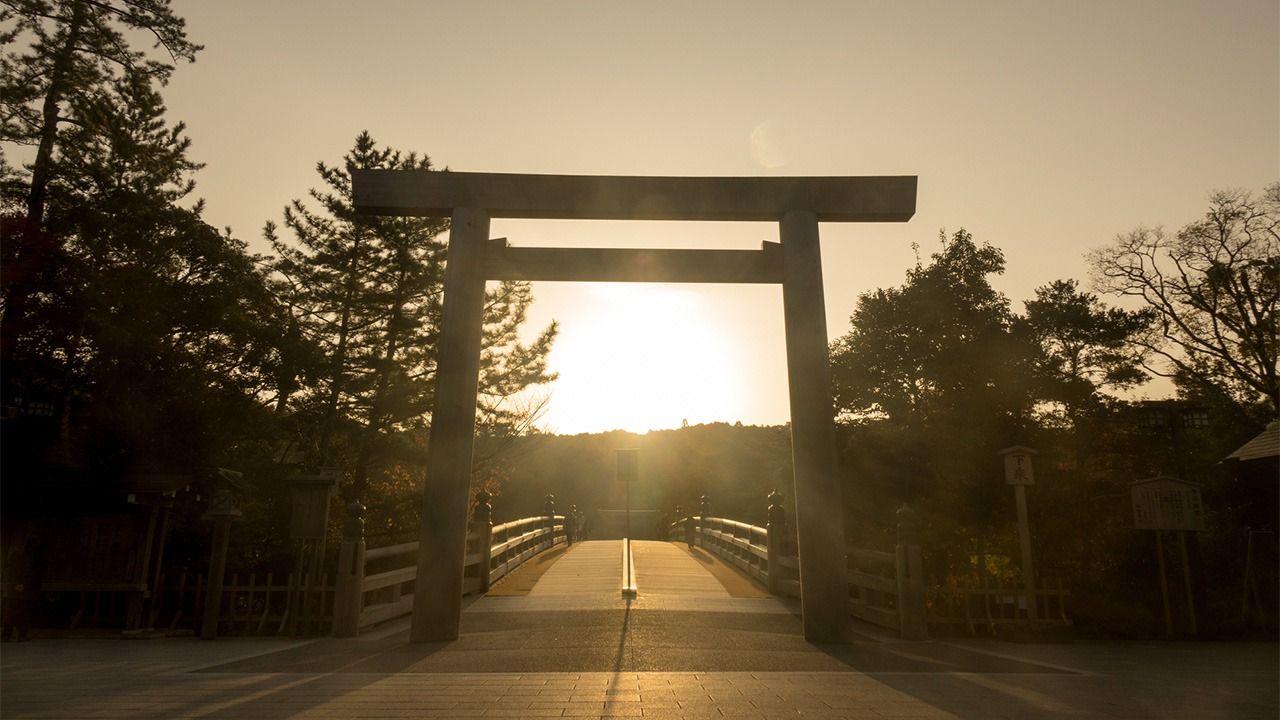
Amaterasu: The Japanese Sun Goddess
Culture History- English
- 日本語
- 简体字
- 繁體字
- Français
- Español
- العربية
- Русский
The Cave Ritual
The ritual performed outside the cave is directed overall by the god of wisdom, Omoikane. At this time, two deities make the sacred mirror (Yata-no-kagami) and beads (Yasaka-no-magatama), which are two of the three items in the Imperial Regalia. The third—the sacred sword (Kusanagi-no-tsurugi)—appears in a later episode in Kojiki.
Two more gods perform a kind of divination, burning the shoulder bone of a stag over bark from the hahaka, or bird cherry tree, and reading the resulting cracks in the bone. They then respectively make offerings and give a ritual prayer.
Then, the goddess Amenouzume enters a frenzy, baring her breasts and dropping her skirt as she dances. The direct references to her breasts and genitals derive from the worship of the life force of women as child bearers, a force that can return the world to normality.
As Amenouzume dances, the eight hundred myriad gods break into laughter, and tell the by now uneasy Amaterasu that there is a more powerful deity than her. When another god holds out the mirror, Amaterasu thinks that this is the “powerful deity” they are talking about. Doubtful, she moves closer, and a strong-armed god takes her by the hand and pulls her fully out of the cave. Just as Amaterasu is said to be the ancestor of Japan’s emperors, several of the gods in the story were said to be the forebears of major clans. Thus, the image of the eighth-century emperor surrounded by supporting clans of the Yamato court is reproduced in the divine myth of Kojiki.
Some suggest that the motif of the sun’s disappearance and rebirth is based on the natural phenomena of eclipses or the winter solstice. It is easy to imagine that the shock of a total eclipse of the sun provided the inspiration, but it would seem unlikely for the legend to become fixed due to such a rare event, and without the repetition needed to convey the story down through generations. Although not as spectacular, I think it is likely that the natural cycle of the return of spring after the sun’s diminishing in strength through to the winter solstice was the basis for the story.
Assigning Authority
Ise Shrine is dedicated to Amaterasu as the highest national deity, yet at times she shows reverence to nameless, unspecified gods. Just before the cave story in Kojiki, she is described as working at making heavenly garments. Why is this?
In Nihon shoki (Chronicle of Japan), another early history, Amaterasu is also known as Ōhirume. Some suggest this name could be read as describing a miko or “shrine maiden,” venerating a male sun god, but that she was later upgraded to a sun goddess. As there are many examples of sun gods in myths from around the world, there may be something in this idea, meaning that traces of a lower-status Amaterasu appear occasionally in the record.
Kojiki was written to legitimize the ritual power of the emperor over the state. Theoretically, it should have been impossible to assign authority to one man over people of so many values and beliefs across the Japanese islands. Yet, the hierarchy of Amaterasu and the lower gods reflected that of the imperial court whose ancestors they were said to be, presenting the emperor as uniting the country’s religious thinking. By virtue of being a descendant of the sun goddess, the emperor saw his position and power assured.
(Originally published in Japanese on September 3, 2019. Banner photo: The great torii at Ise Shrine, which is dedicated to Amaterasu. © Pixta.)
